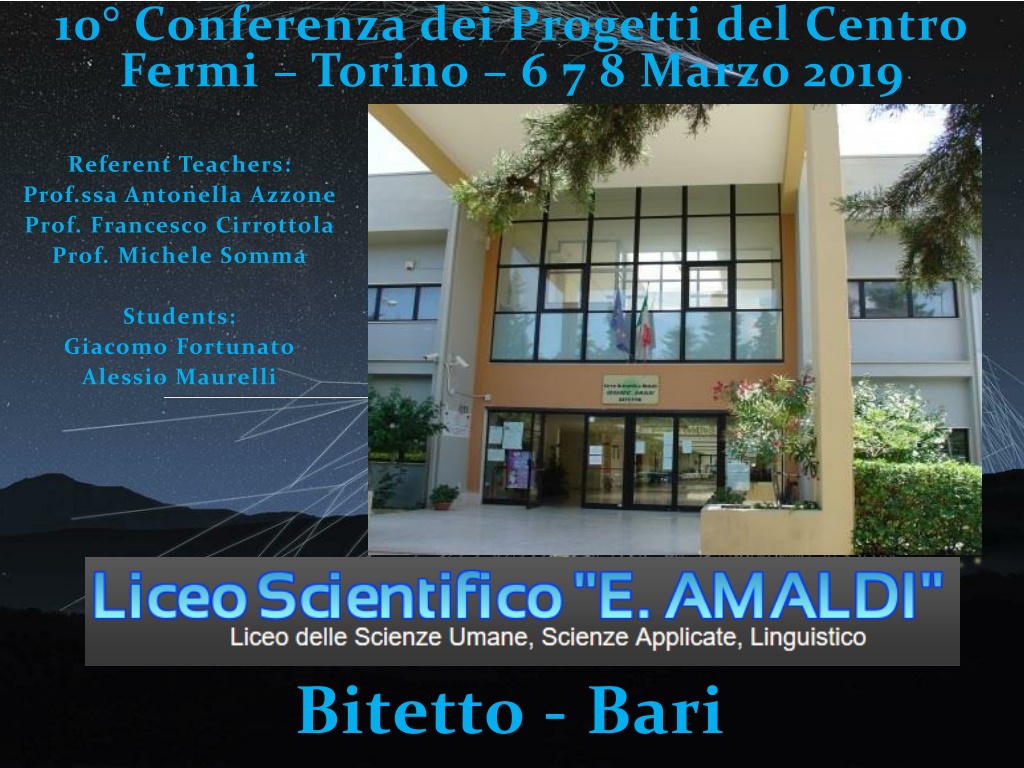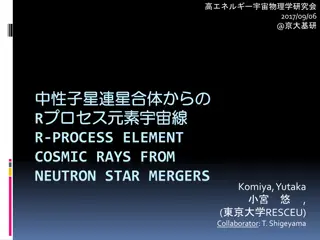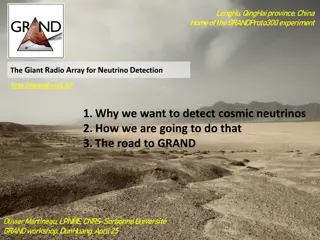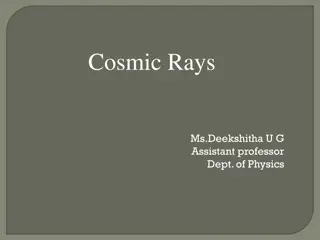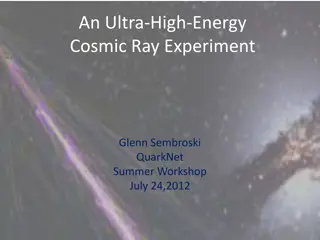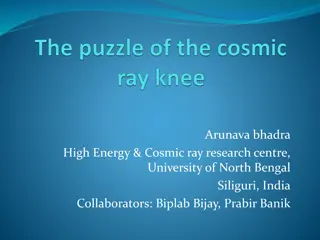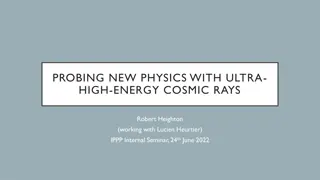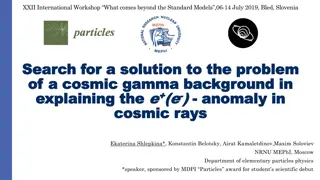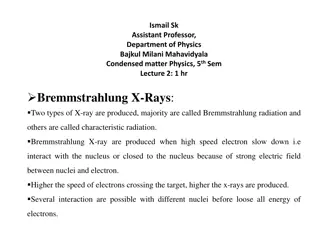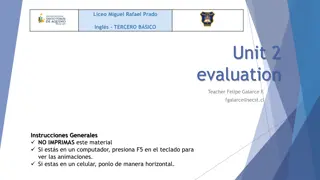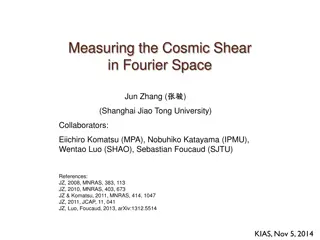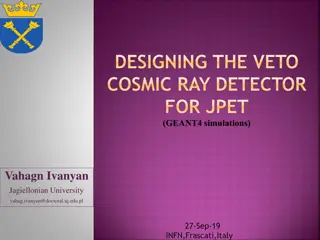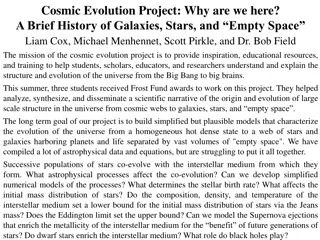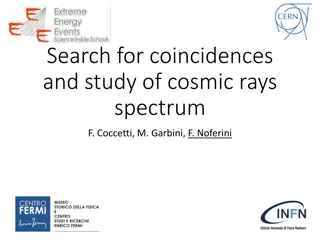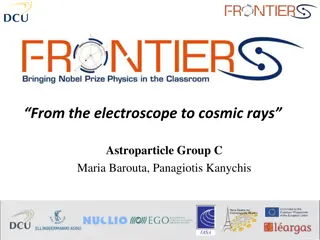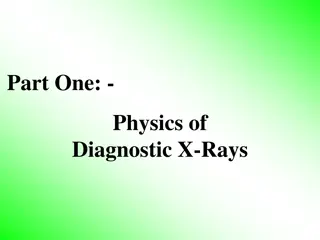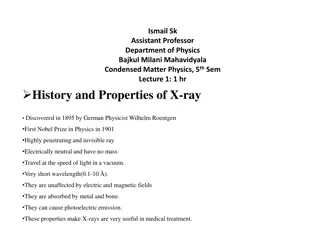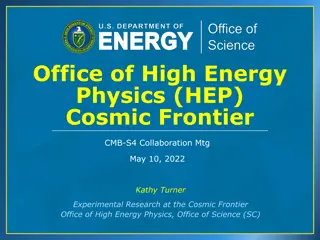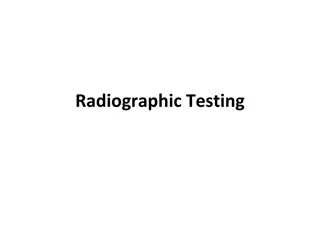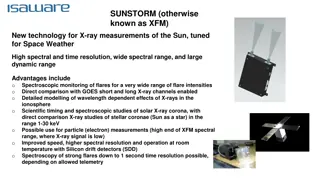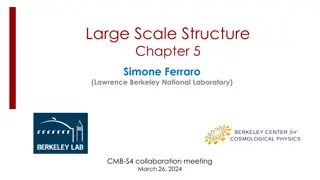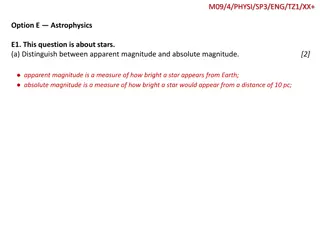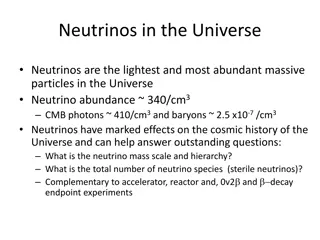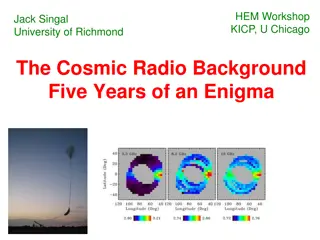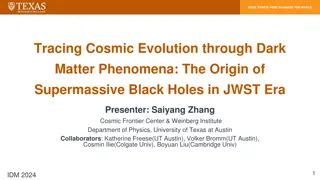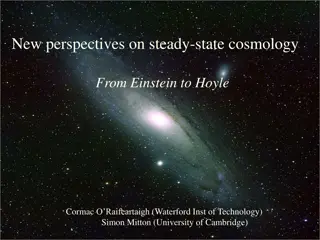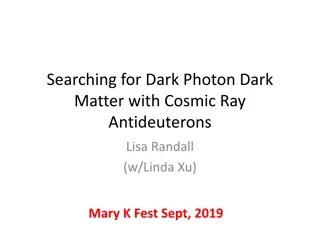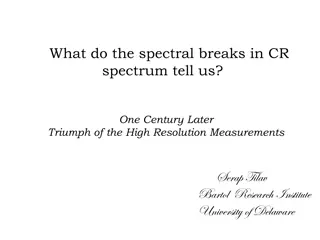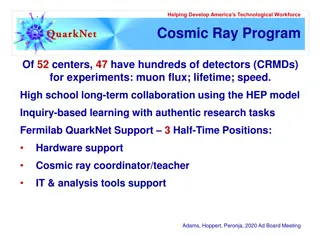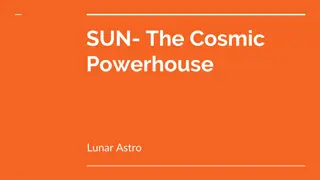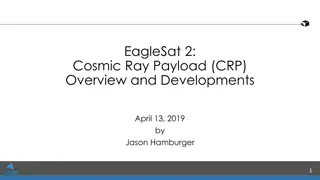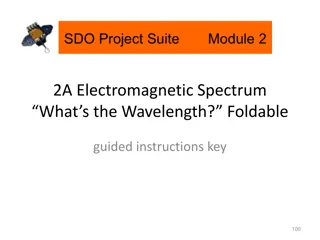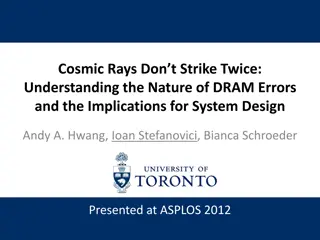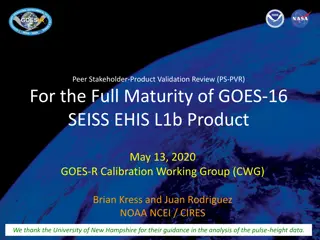Investigating Cosmic Rays with Student Researchers at Liceo Amaldi
A group of 40 students from Liceo Amaldi have been actively involved in the Extreme Energy Events project, studying cosmic rays and telescopic data. Utilizing software like Lazarus, Excel, and Root, they have analyzed the speed and angular distribution of cosmic ray muons. The students also went to CERN to build the MRPC chambers for a telescope. The analysis involved data from various telescopes and resulted in measuring muon speed and comparison with a Gaussian function.
Download Presentation

Please find below an Image/Link to download the presentation.
The content on the website is provided AS IS for your information and personal use only. It may not be sold, licensed, or shared on other websites without obtaining consent from the author. Download presentation by click this link. If you encounter any issues during the download, it is possible that the publisher has removed the file from their server.
E N D
Presentation Transcript
10 Conferenza dei Progetti del Centro Fermi Torino 6 7 8 Marzo 2019 Referent Teachers: Prof.ssa Antonella Azzone Prof. Francesco Cirrottola Prof. Michele Somma Students: Giacomo Fortunato Alessio Maurelli Bitetto - Bari
A group of 40 students of Liceo Amaldi have taken part to the Extreme Energy Events project for three years. They are studying the telescopes data collected at other schools. In January 2019 two teachers and ten students of our school went to CERN, in Geneva, to build the MRPC chambers of the telescope, which is going to be installed in our school.
Goals of our analysis To measure the angular distribution of cosmic rays. To measure the speed of cosmic ray muons. Software used: Lazarus Excel Root
Lazarus is a multi purpose didactic software. We used it to created this tools to replace in a file .CSV the decimal point with a comma.
To study the cosmic ray muons speed: We have computed the muonsspeed as the ratio TrackOfLength/ TimeOfFlight(cm/ns) We havecreated a frequency histogram of the speed distribution. We have compared this histogram with a gaussian function.
We analyzed data from different telescopes during the period 13 - 18 January 2019 : ALTA-01 BARI-01 CAGL-01 CAGL-03 CERN-01 CERN-02 FRAS-01 FRAS-03
ALTA-01from2019-01-13to2019-01-14 (Count.if negative data) = = 3 946 1 048 576 imported data 1 032 614 data included in the range [14 ; 43] cm/ns (Count.if t=0) = 28 Mean 27,73 cm/ns RMS 2,92 cm/ns RMS 2,45 cm/ns
BARI-01from2019-01-13to2019-01-14 (Count.if negative data) = 1 048 576 imported data = 1 879 1 037 610 data included in the range [14 ; 43] cm/ns (Count.if t=0) = 16 Mean 28,00 cm/ns RMS 3,72 cm/ns RMS 3,3 cm/ns
CAGL-01from2019-01-13to2019-01-14 (Count.if positive data) = 1 048 576 imported data = 5854 1 027 363 data included in the range [-43 ; -14] cm/ns (Count.if t=0) = 18 Mean -29,07 cm/ns RMS 3,55 cm/ns RMS 3,2 cm/ns
CAGL-01from2019-01-13to2019-01-14 (Count.if positive data) = 1 048 576 imported data = 5854 1 027 363 data included in the range [-43 ; -14] cm/ns (Count.if t=0) = 18 Mean -29,07 cm/ns RMS 3,55 cm/ns Similar results CAGL-01from2019-01-15to2019- 01-16 CAGL-01from2019-01-17to2019- 01-18 RMS 3,2 cm/ns Maybe the first chamber of this telescope has been substituted for the third one...
CAGL-03from2019-01-17to2019-01-18 (Count.if negative data) = 1 048 576 imported data = 15 542 991 652 data included in the range [14 ; 43] cm/ns (Count.if t=0) = 78 Mean 32,35cm/ns RMS 3,82 cm/ns RMS 3,4 cm/ns
CERN-01from2019-01-13to2019-01-14 (Count.if negative data) = 1 048 576 imported data = 4 436 1 006 591 data included in the range [4 ; 33] cm/ns (Count.if t=0) = 6 Mean 16,77cm/ns RMS 1,55 cm/ns RMS 1,3 cm/ns
CERN-01from2019-01-13to2019-01-14 (Count.if negative data) = 1 048 576 imported data = 4 436 1 006 591 data included in the range [4 ; 33] cm/ns (Count.if t=0) = 6 Mean 16,77cm/ns RMS 1,55 cm/ns Why is the speed so low? Maybe it is because this telescope is used to test the chambers already built RMS 1,3 cm/ns
CERN-02from2019-01-15to2019-01-16 (Count.if negative data) = 1 048 576 imported data = 5 410 947 323 data included in the range [14 ; 43] cm/ns (Count.if t=0) = 69 Media 29,58 cm/ns Dev. Stand. 5,43 cm/ns RMS 5,3 cm/ns
CERN-02from2019-01-15to2019-01-16 (Count.if negative data) = 1 048 576 imported data = 5 410 947 323 data included in the range [14 ; 43] cm/ns (Count.if t=0) = 69 Media 29,58 cm/ns Dev. Stand. 5,43 cm/ns Similar results CERN-02from2019-01-17to2019-01-18 RMS 5,3 cm/ns
FRAS-01from2019-01-18to2019-01-18 (Count.if negative data) = 0 1 048 576 imported data (Count.if t=0) = 0 59 030 data included in the range [14 ; 43] cm/ns Media 31,32 cm/ns Dev. Stand. 5,46 cm/ns RMS 5,3 cm/ns
FRAS-03from2019-01-14to2019-01-14 (Count.if negative data) = 1 048 576 imported data = 3 410 1 026 928 data included in the range [14 ; 43] cm/ns (Count.if t=0) = 71 Media 25,65cm/ns Dev. Stand. 3,82 cm/ns RMS 3,25 cm/ns
Gaussiansin comparison The height of the curve indicates the number of good events. The centroid of the gaussiancurve is the average speedofmuons
Conclusions Thecentroid of thegaussiancurveistheaveragespeed of cosmicraysmuons. We found a value very close to the speed of light, about 28,5 29,5cm/ns. ThedistributionisnotperfectlyaGaussianfunction. Ithasa tail ontheright. Inthedatasamplewefoundnegativevaluesof thespeed, duetoupwardgoingparticles.
